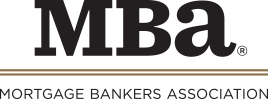
DLA Piper Finds Optimism Among CRE Leaders

Commercial real estate leaders report market optimism despite macroeconomic and geopolitical headwinds, according to DLA Piper’s annual Real Estate State of the Market Survey.
DLA Piper asked commercial real estate leaders for their opinions on the sector’s economic outlook, the attractiveness of various asset classes and investment markets and overall expectations for the next 12 months. An initial “Wave 1” survey was conducted between February and March, followed by a subsequent brief “Wave 2” survey in May to explore the effects of tariff and trade policy announcements.
Wave 1 showed a near equilibrium between executives who called themselves bullish (52 percent) and those who called themselves bearish (48 percent), a significant recovery from 2023 when 86 percent of respondents were bearish. “However, that optimism has since been tempered,” DLA Piper noted. “In Wave 2, the percentage of respondents who felt bullish about the market dropped to 34 percent from 52 percent, while those who felt bearish rose to 66 percent from 48 percent.”
In Wave 1, 31 percent of respondents cited strong fundamentals in certain asset classes as their reason for optimism. Multifamily (51 percent) and data centers (44 percent) drove respondents’ early 2025 bullishness.
More than 20 percent of respondents in both surveys said they consider affordable and senior housing attractive.
“Availability of equity capital as a reason for confidence jumped from 5 percent in Wave 1 to 15 percent in Wave 2, with 53 percent of respondents believing more equity will be available within the next 12 months,” the report said.
Looking at macroeconomic forces that affect commercial real estate, 54 percent of respondents in Wave 2 predicted current and proposed tariffs will have a negative impact–including 16 percent who anticipated a “very negative” impact. Just 5 percent expected them to have a positive impact. DLA Piper said 41 percent of respondents expected no impact from the tariffs.
Interest rates remain a concern. 60 percent identified high interest rates as a top concern for the year ahead in Wave 1 and 66 percent said the same in Wave 2.
“CRE leaders entered 2025 with a sense of increasing optimism, but trade tensions, market volatility, and geopolitical issues have led to increased bearishness,” the report said. “Survey respondents overwhelmingly agreed that the market’s improving health – characterized by attractive opportunities in certain asset classes – provides a buffer against macroeconomic and geopolitical headwinds.”
